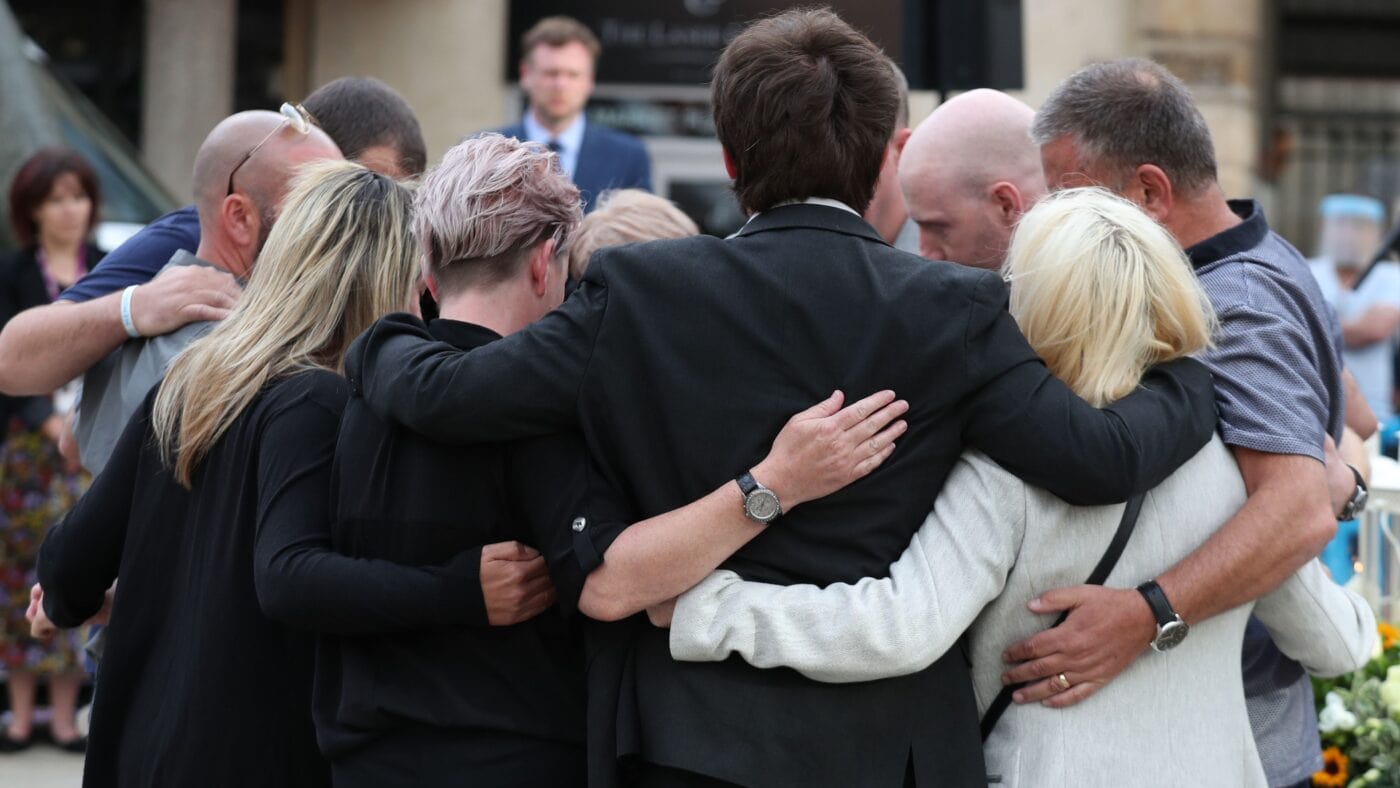Is there such a thing as an acceptable level of terrorism? You would be forgiven for thinking so. Last week, the results of yet another inquest into a terrorist attack here, all but flattened by the news cycle juggernaut, revealed yet more failures by the state’s agencies to protect citizens.
The families of James Furlong, Patrick Edwards and David Wails were at the Old Bailey at the conclusion of the inquest into their murders at the hands of an Islamist terrorist, Khairi Saadallah. Saadallah butchered his victims in a stabbing spree in a park in Reading on June 30 2020. He was jailed for their murders and the attempted murders of three other people with the judge imposing a rare whole life sentence. He will die in prison.
The Coroner’s conclusion was devastating, if unremarkable in this era of corporate risk management failure. Their murders were ‘probably preventable’. In the months and days before his attack, Saadallah had displayed clear and unmistakable behaviour that he was violent, ideologically motivated and mentally unstable. The problem was that these bits of information were not held by one agency, but several, and a tragic and unforgivable failure of communication meant he was able to murder innocent people.
While the court case is essentially a fact finding exercise, the inquest is often a fault finding one. In this, case the Coroner did not hold back. Reports about the risk Sadallah posed were ‘markedly deficient’ and one intelligence assessment was simply inadequate.
It is worth setting out Saadallah’s contact with agencies we expect to work together to keep us safe. He was released from HMP Bullingdon two weeks before the attack after serving a 17 month sentence for affray and assault for beating an emergency worker. Here, his mental health problems and prior association with a radical Islamist terrorist were well known. There was no therapeutic intervention in prison and each time he returned there from the community there was no continuity of assessment.
After being released from prison and prior to the attack, while being supervised by the Probation Service, he descended into irrational, threatening behaviour and drug taking that ought to have prompted his recall to jail. His probation worker tried to get the local NHS Trust to engage with him without success. He was graded ‘low risk’. Thames Valley Police failed to pass on to probation colleagues a telephoned warning from Saadallah’s brother the day before the attack that he was intent on harming ‘himself and others’.
But what about Counter Terrorism Policing, who should have had overall visibility of the case? The Coroner described ‘significantly troubling failings’ in their ability to understand or communicate the threat that was clearly in front of them. MI5 had assessed him in 2019 as being at risk of becoming an Islamist foreign fighter but discontinued investigation. Saadallah was referred to the Government’s Prevent programme on several occasions but they deemed he had no fixed ideology and there was no intervention.
If you’re bewildered by this alphabet soup of different agencies, you’ve hit upon the serious problem we have that, unless addressed, will mean that we must accept further terrorists falling through an inadequate net to continue to harm our citizens. While each of these agencies was culpable in some way for an avoidable terrorist attack, their failure to integrate intelligence gathering and risk management will withstand any pious ‘lessons learned’ statements from rattled chief executives and officers. We have a plainly inadequate system of surveillance and management of highly risky and dangerous people and this is being shown repeatedly and to lethal effect.
It is always going to be the case when agencies with different cultures, structures and capabilities are expected to share critical information in dynamic circumstances. Saadallah wasn’t just known to these agencies, he was well known. He was a psychologically unstable ex-combatant from a Libyan Islamist gang whose behaviour was so erratic and violent that he was earmarked for deportation. He didn’t leave a trail of breadcrumbs to his intentions, he cast whole loaves around. He and we were failed in every conceivable way by agencies that had a legal duty to cooperate to stop terrorists but a practical inability to do so in any meaningful way.
There is an obvious alternative to this learned helplessness. I have argued for it many times. We need one single, executive, multi-disciplinary national risk management agency that is responsible for the management of terrorist risk from early detection right through prison and beyond into reintegration. This avoids the sclerotic pipework of multi-agency failure from handover to analysis to intervention this inquest revealed in stark detail. Detractors to this solution will say we have perfectly adequate arrangements now and they must simply be allowed to work better. But the current arrangements weren’t even in play when Saadallah was waving red flags about his intention. If you want to know how well these work, just ask the relatives of Saskia Jones and Jack Merritt who were murdered by Islamist terrorist Usman Khan while under their supervision.
Do not be deceived by our professional classes who will argue from vested reputational interest that what we have now is a gold standard and that we simply have to expect some failure as inevitable. We owe the bereaved and broken families of those killed by organisational failure more than that.
Click here to subscribe to our daily briefing – the best pieces from CapX and across the web.
CapX depends on the generosity of its readers. If you value what we do, please consider making a donation.


